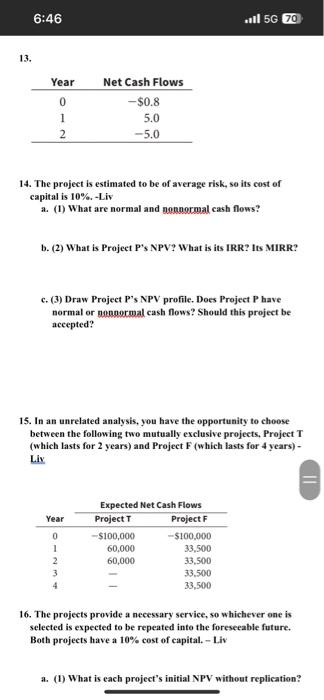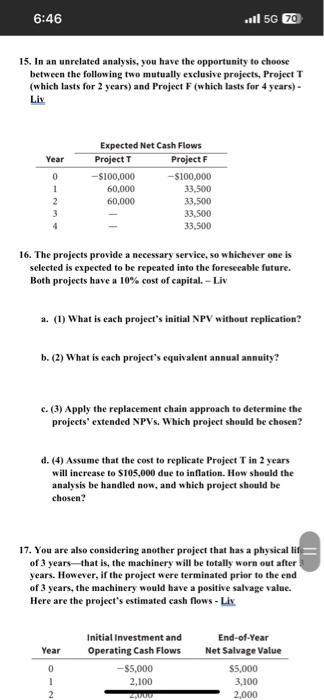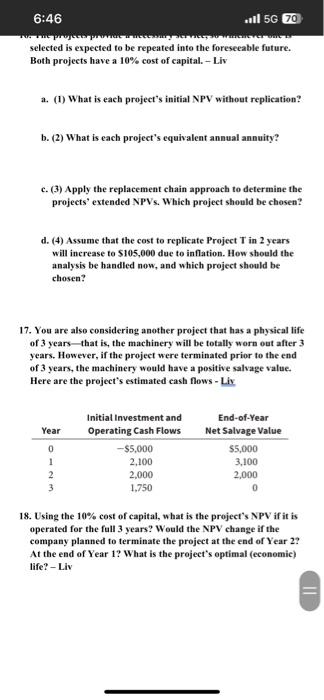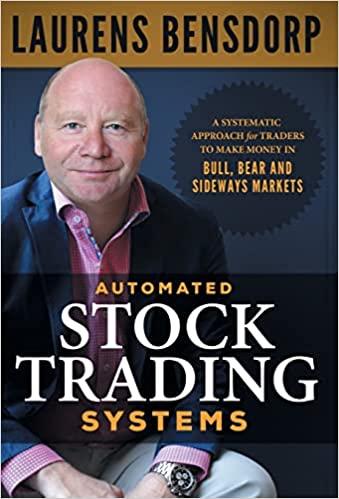Need help answering 13-18

14. The project is estimated to be of average risk, so its cost of capital is 10%, - Lis a. (1) What are normal and nowoormal cash flows? b. (2) What is Project P's NPV? What is its IRR? Its MIRR? c. (3) Draw Project P's NPV profile. Does Project P have normal or nonoormal cash flows? Should this project be accepted? 15. In an unrelated analysis, you have the opportunity to choose between the following two mutually exclusive projects, Project T (which lasts for 2 years) and Project F (which lasts for 4 years) Liv 16. The projects provide a necessary service, so whichever one is selected is expected to be repeated inte the foreseeable future. Both projects have a 10% cost of capital. - Liv a. (1) What is each project's initial NPV without replication? 15. In an unrelated analysis, you have the opportunity to choose between the following two mutually exclusive projects, Project T (which lasts for 2 years) and Project F (which lasts for 4 years) Liv 16. The projects provide a necessary service, so whichever one is selected is expected to be repeated into the foresecable future. Both projects have a 10% cost of capital. - Liv a. (1) What is each project's initial NPV without replication? b. (2) What is each project's equivalent annual annuity? c. (3) Apply the replacement chain approach to determine the projects' extended NPVs, Which project should be chosen? d. (4) Assume that the cost to replicate Project T in 2 years will increase to $105,000 due to inflation. How should the analysis be handled now, and which project should be chosen? 17. You are also considering another project that has a physical ti of 3 years - that is, the machinery will be totally worn out after years. However, if the project were terminated prior to the end of 3 years, the machinery would have a positive salvage value. Here are the project's estimated cash flows - Liv selected is expected to be repeated into the foreseeable future. Both projects have a 10% cost of capital. - Liv a. (1) What is each project's initial NPV without replication? b. (2) What is each project's equivalent annual annuity? c. (3) Apply the replacement chain approach to determine the projects' extended NPVs. Which project should be chesen? d. (4) Assume that the cost to replicate Project T in 2 years will increase to $105,000 due to inflation. How should the analysis be handled now, and which project should be chosen? 17. You are also considering another project that has a physical life of 3 years - that is, the machinery will be totally worn out after 3 years. However, if the project were terminated prior to the end of 3 years, the machinery would have a positive salvage value. Here are the project's estimated cash flows - Liv 18. Using the 10% cost of capital, what is the project's NPV if it is operated for the full 3 years? Would the NPV change if the company planned to terminate the project at the end of Year 2 ? At the end of Year 1? What is the project's optimal (economic) life? - Liv 14. The project is estimated to be of average risk, so its cost of capital is 10%, - Lis a. (1) What are normal and nowoormal cash flows? b. (2) What is Project P's NPV? What is its IRR? Its MIRR? c. (3) Draw Project P's NPV profile. Does Project P have normal or nonoormal cash flows? Should this project be accepted? 15. In an unrelated analysis, you have the opportunity to choose between the following two mutually exclusive projects, Project T (which lasts for 2 years) and Project F (which lasts for 4 years) Liv 16. The projects provide a necessary service, so whichever one is selected is expected to be repeated inte the foreseeable future. Both projects have a 10% cost of capital. - Liv a. (1) What is each project's initial NPV without replication? 15. In an unrelated analysis, you have the opportunity to choose between the following two mutually exclusive projects, Project T (which lasts for 2 years) and Project F (which lasts for 4 years) Liv 16. The projects provide a necessary service, so whichever one is selected is expected to be repeated into the foresecable future. Both projects have a 10% cost of capital. - Liv a. (1) What is each project's initial NPV without replication? b. (2) What is each project's equivalent annual annuity? c. (3) Apply the replacement chain approach to determine the projects' extended NPVs, Which project should be chosen? d. (4) Assume that the cost to replicate Project T in 2 years will increase to $105,000 due to inflation. How should the analysis be handled now, and which project should be chosen? 17. You are also considering another project that has a physical ti of 3 years - that is, the machinery will be totally worn out after years. However, if the project were terminated prior to the end of 3 years, the machinery would have a positive salvage value. Here are the project's estimated cash flows - Liv selected is expected to be repeated into the foreseeable future. Both projects have a 10% cost of capital. - Liv a. (1) What is each project's initial NPV without replication? b. (2) What is each project's equivalent annual annuity? c. (3) Apply the replacement chain approach to determine the projects' extended NPVs. Which project should be chesen? d. (4) Assume that the cost to replicate Project T in 2 years will increase to $105,000 due to inflation. How should the analysis be handled now, and which project should be chosen? 17. You are also considering another project that has a physical life of 3 years - that is, the machinery will be totally worn out after 3 years. However, if the project were terminated prior to the end of 3 years, the machinery would have a positive salvage value. Here are the project's estimated cash flows - Liv 18. Using the 10% cost of capital, what is the project's NPV if it is operated for the full 3 years? Would the NPV change if the company planned to terminate the project at the end of Year 2 ? At the end of Year 1? What is the project's optimal (economic) life? - Liv










